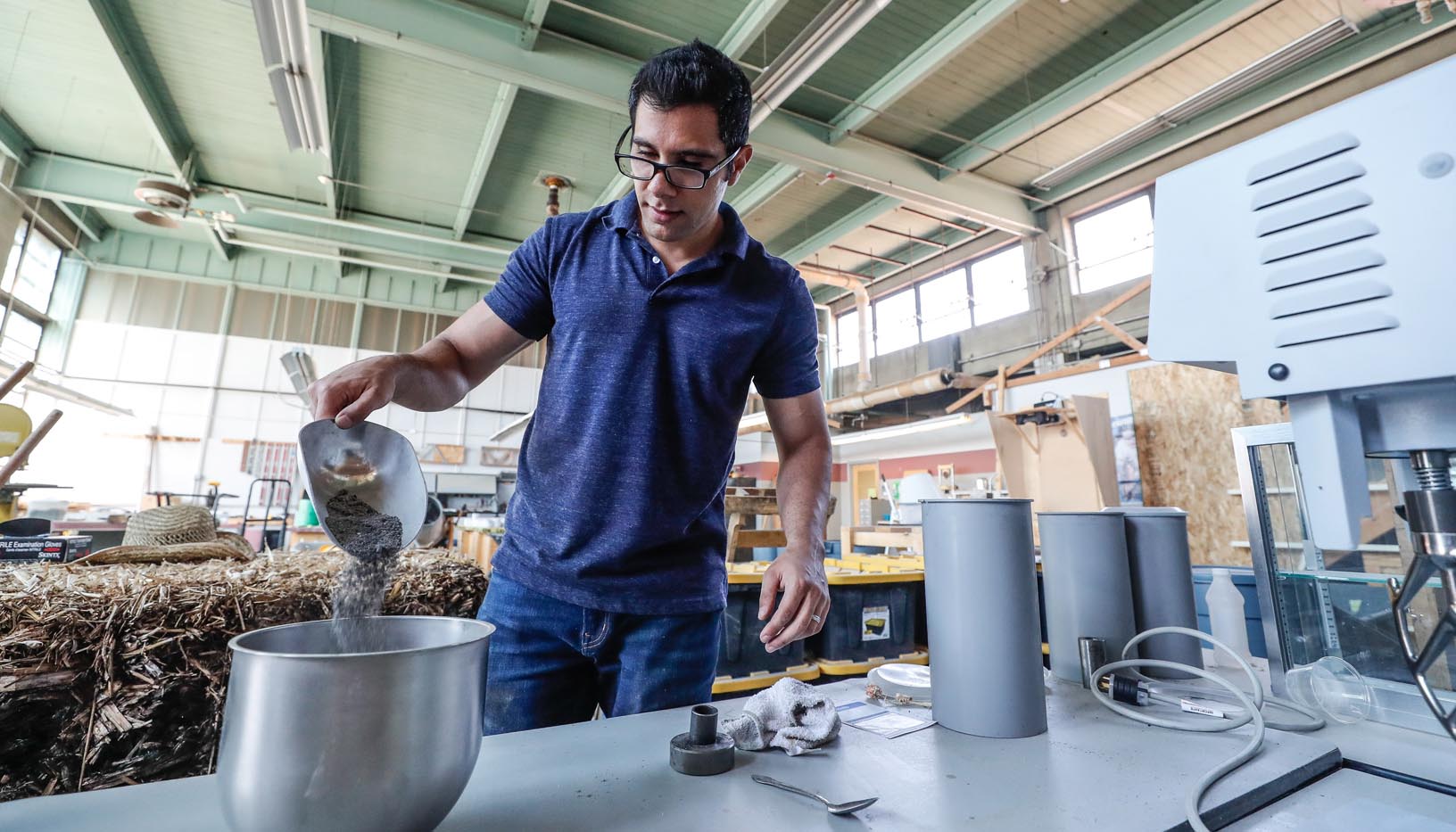
By TYLER ELLYSON
UNK Communications
KEARNEY – The Cornhusker State’s namesake crop could play an important role in addressing America’s infrastructure needs.
Researchers at the University of Nebraska at Kearney are studying whether corncobs and stover – the stalks, leaves and husks left over after harvest – can be used to improve the durability of concrete.
The projects, led by Mahmoud Shakouri, an assistant professor of construction management, may have lasting impacts on the construction industry and global economy.
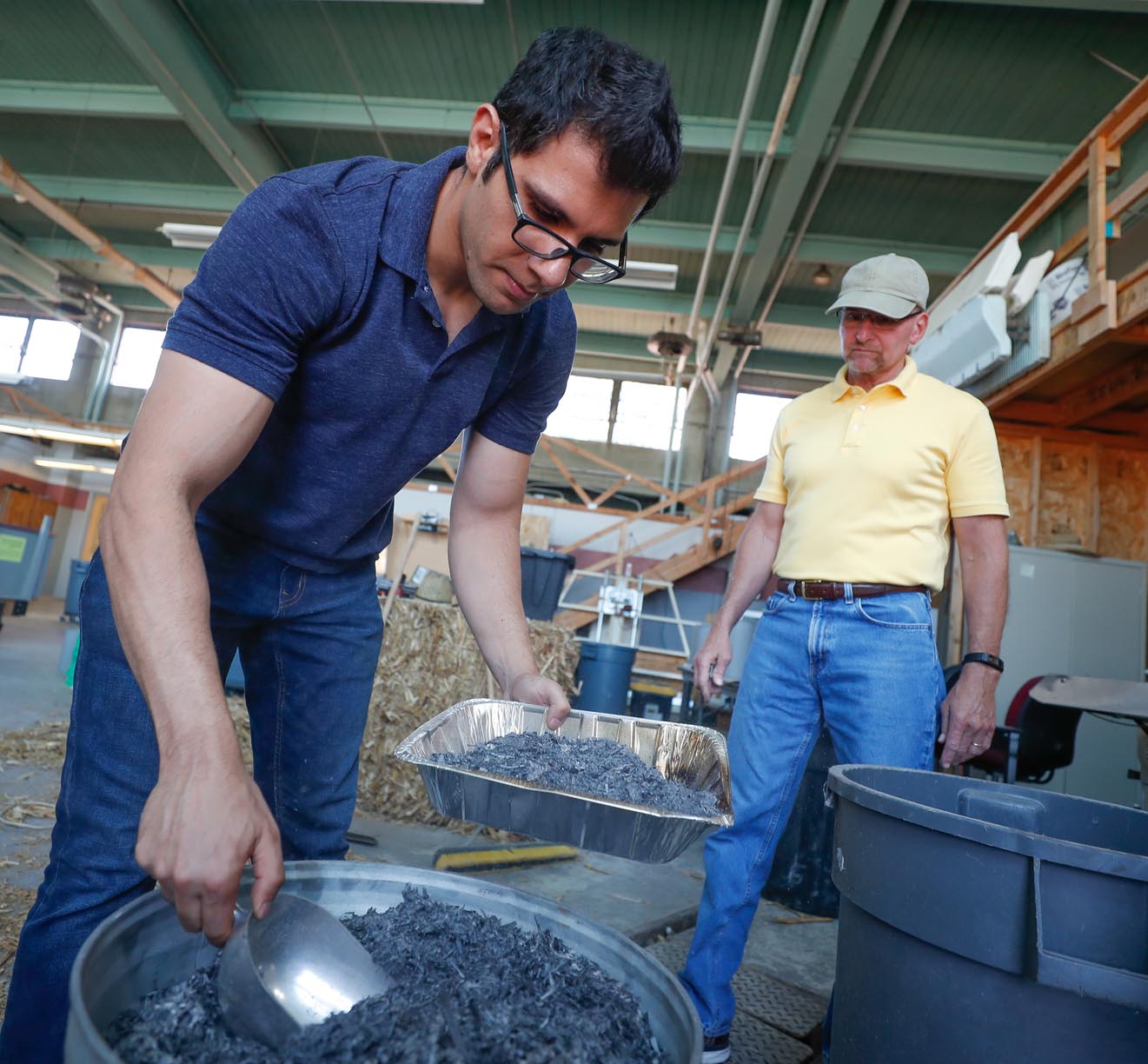
“We have a very old infrastructure system. There’s a lot of attention right now on infrastructure,” said Shakouri, who holds a doctorate in civil engineering from Oregon State University.
Following his election in November 2016, President Donald Trump announced a plan that directs $200 billion in federal funding toward projects that repair or replace aging roads, bridges and other infrastructure, with a goal of spurring at least $1.5 trillion in spending after local, state, tribal and private contributions.
To supply this ever-increasing demand, Shakouri noted, “there is an exponential need for production of sustainable construction materials.”
Shakouri, who joined UNK in 2017, believes corn could be part of the solution.
Currently, materials such as fly ash, silica fume or blast furnace slag are added to cement to improve concrete’s strength and durability. However, fly ash – a byproduct from coal-fired power plants – will be harder to come by as bans on coal-generated electricity broaden.
The research underway at UNK will determine whether ash produced by burning corncobs and corn stover can serve the same purpose.
“Given the recent reductions in the supply of fly ash and the pressing need to build durable and resilient infrastructure, it is essential to look for alternative supplementary materials,” Shakouri said.
One study, conducted by Shakouri and Jim Vaux, an assistant professor of construction management and chair of UNK’s Industrial Technology Department, focuses on whether corncob ash can improve the durability of concrete by reducing its permeability.
According to the researchers, one of the primary causes of deterioration in concrete bridges and roads is the use of salt and other deicers during snow and ice removal. When these chloride-based deicing agents seep into concrete, they deteriorate the reinforcing steel inside, weakening the structure and shortening its life span.
“This is a pretty big deal,” said Vaux, who spent 25 years in the construction industry before becoming a professor.
Previous research has shown mixing agricultural byproducts such as rice husk ash and bagasse ash, which comes from sugarcane mills, with cement can reduce the porosity of concrete, making it more resistant to chloride-triggered corrosion. Shakouri and Vaux hope to prove the same is true for corncob ash.
“Given that corncob is an affordable and sustainable product in Nebraska, the application of this agricultural waste in the concrete industry contributes to a more durable and sustainable society and infrastructure,” Shakouri said. “This project can also offer opportunities to create jobs and benefit the economy of the state.”
The second research project, a collaboration between Shakouri, Vaux and chemistry professors Chris Exstrom and Scott Darveau, who is also the department chair, looks at corn stover ash as a replacement for coal combustion byproducts in cement.
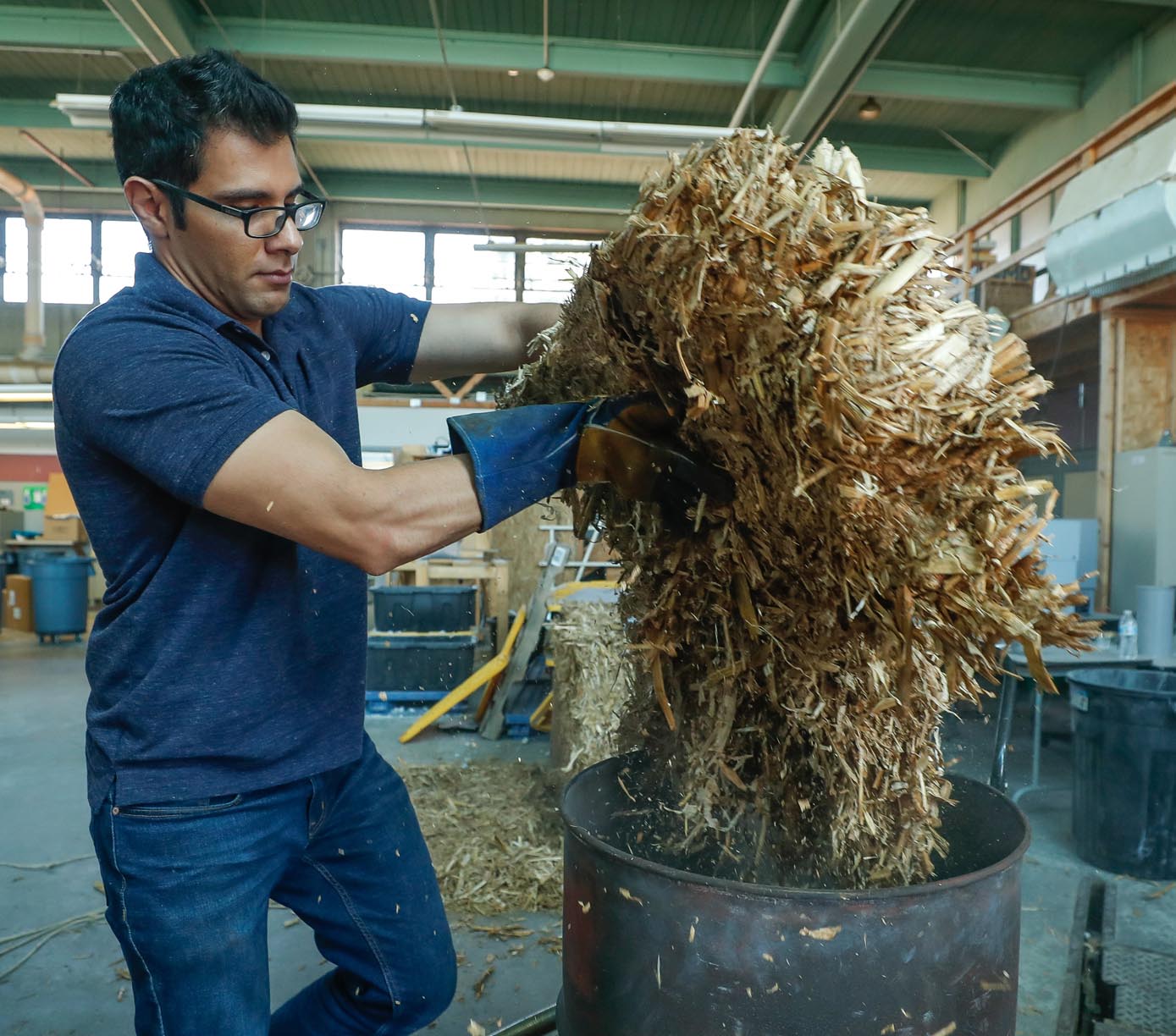
About 10 billion tons of concrete are produced each year worldwide, and the UNK researchers say a more sustainable supplementary material is needed to ensure the quality remains strong.
“There’s an ample supply of corn stover,” Vaux said of the product that can be used as livestock feed or to make biofuels.
Nebraska is the third-largest corn-producing state in the U.S., harvesting nearly 1.7 billion bushels of the crop in 2017, according to U.S. Department of Agriculture estimates.
By mixing ash from agricultural waste with cement, the researchers also believe they can reduce the product’s environmental impact. It takes a “significant amount” of energy to produce cement, according to Shakouri, and less cement is needed when it’s replaced with supplementary materials.
“Basically, we reduce the carbon footprint,” Shakouri said, calling corncob and stover “a very eco-friendly material.”
“We believe it has the potential to contribute to this field,” he said.
The corncob project, which started in February, is funded by Nebraska’s Established Program to Stimulate Competitive Research (EPSCoR), part of a National Science Foundation program aimed at strengthening STEM research. The stover project began this summer and is funded by a UNK Collaborative Research Grant.
Shakouri also received $205,000 from the Nebraska Research Initiative to purchase state-of-the-art equipment used for material characterization and corrosion assessments. The researchers have a high-temperature cyclonic furnace to burn the corncobs and stover and a compression testing machine to measure the strength of concrete.
When the industrial technology department moves from Otto C. Olsen to a new STEM building that’s expected to open in fall 2019, this equipment will be part of a concrete-testing lab used by students and faculty. Two undergraduate students will be hired next semester to assist with the current research.
The UNK researchers expect to have results from the corncob ash study around December, with the stover results following in the spring. They plan to seek additional funding through the National Cooperative Highway Research Program to build on their work.
“I’m really optimistic about future research here in concrete and infrastructure,” Shakouri said. “I think this is just the beginning.”
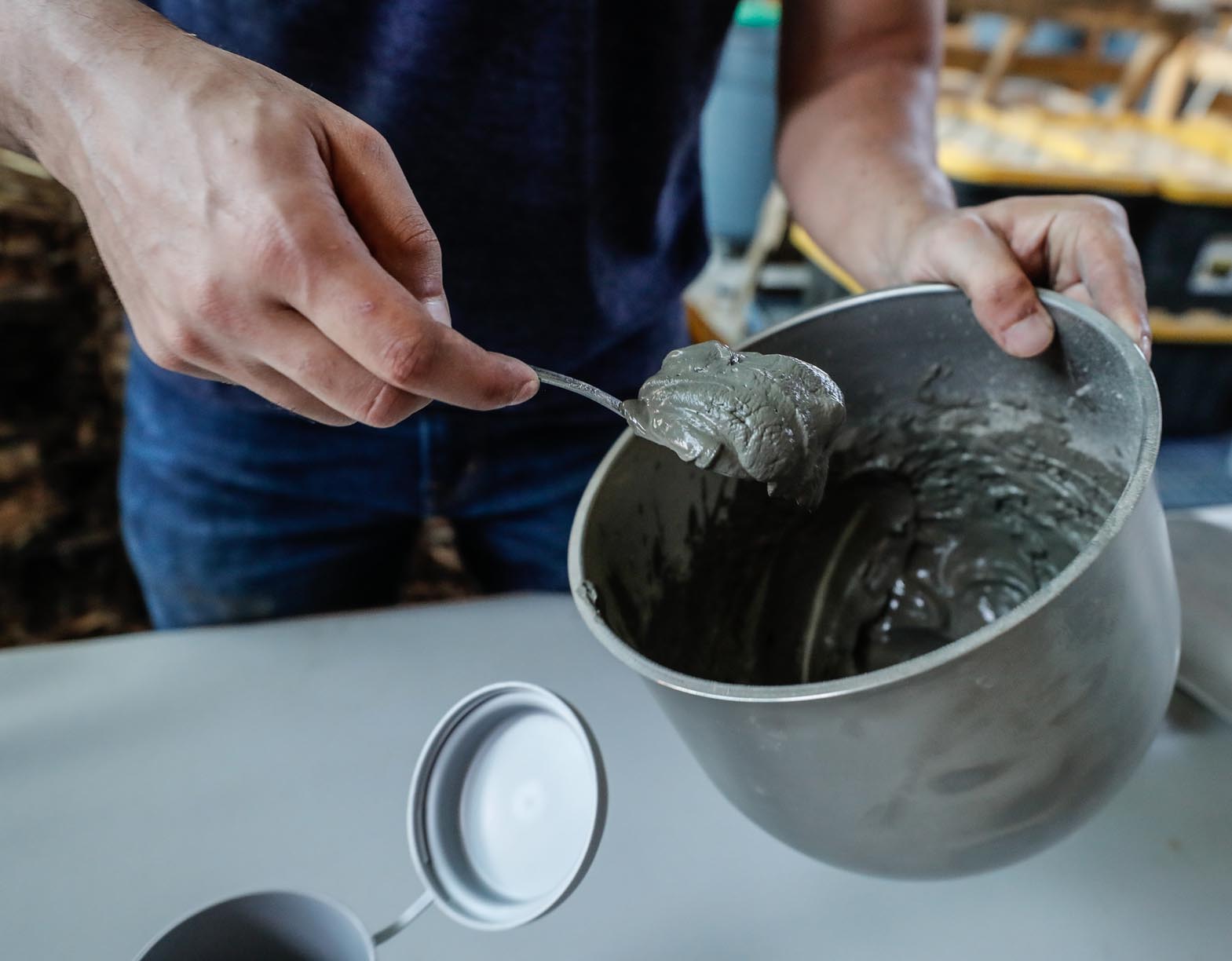
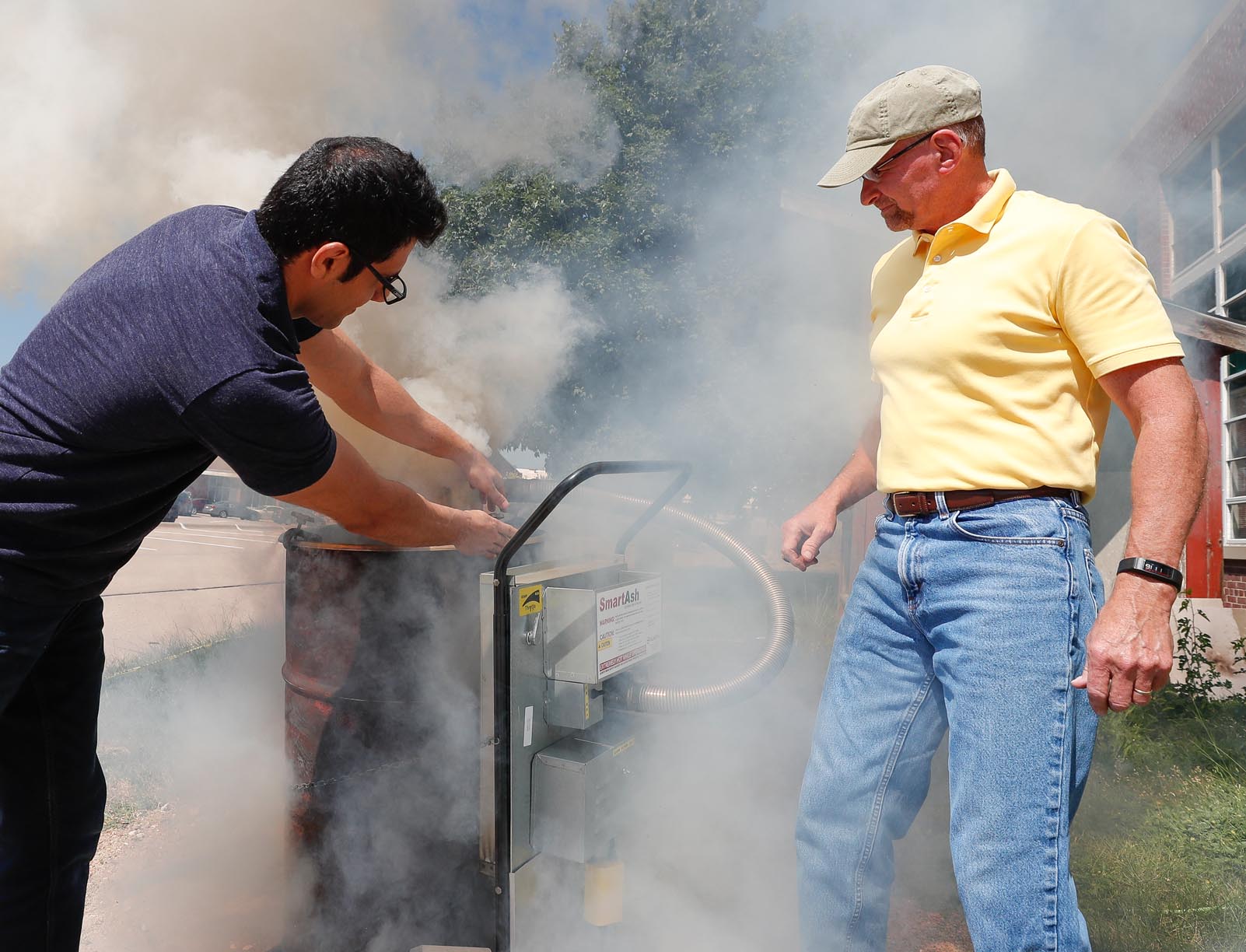
MEET THE RESEARCHERS
Mahmoud Shakouri
Title: Assistant professor, construction management
Education: Bachelor of Science, architectural engineering, Azad University of Tehran, 2008; Master of Science, construction management, Universiti Teknologi Malaysia, 2012; Master of Science, industrial engineering, Louisiana State University, 2014; doctorate, civil engineering, Oregon State University, 2017.
Courses taught: Virtual design and construction, statics and strength of materials, construction materials and methods, mechanical and electrical system, advanced virtual design and construction, building codes and inspections.

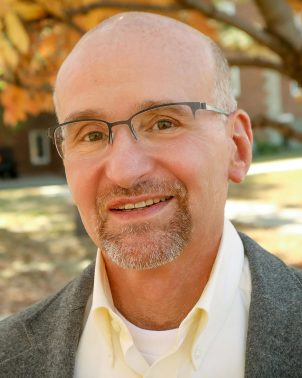
Jim Vaux
Title: Assistant professor, construction management; chair, industrial technology department
Education: Bachelor of Arts, Northwest University, 1983; Master of Engineering and Technology Management, Washington State University, 2010; doctorate, organizational behavior, psychology, engineering management and management, Washington State University, 2014.
Courses taught: Engineering design graphics, construction materials and methods, construction surveying, industrial management, mechanical and electrical systems, human factors and productivity, seminar in construction management, general studies capstone.
Chris Exstrom
Title: Professor, chemistry
Education: Bachelor of Arts, chemistry, Illinois Wesleyan University, 1990; doctorate, chemistry, University of Minnesota, 1995.
Courses taught: Undergraduate – general chemistry, environmental chemistry, materials chemistry, advanced chemistry lab, seminar courses; Graduate – chemical management and safety for high school teachers, environmental chemistry for high school teachers, inorganic chemistry for high school teachers, transition metal chemistry for high school teachers, nanoscience for high school teachers.

Scott Darveau
Title: Professor and department chair, chemistry
Education: Bachelor of Science, chemistry, University of Nebraska-Lincoln, 1992; doctorate, physical chemistry, University of Chicago, 1998.
Courses taught: General chemistry and lab, general chemistry II and lab, physical chemistry I and II.
Finding a more sustainable source of supplementary material for concrete using corn cob and stover will help to reduce our carbon footprint and solve environmental and social problems at the same time. Killing two birds with one stone!